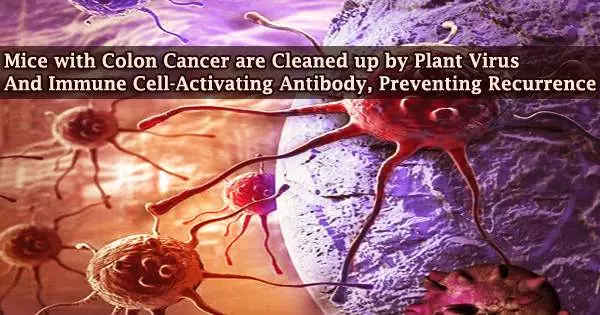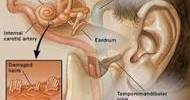According to a study by scientists at the University of California San Diego, a plant virus and an antibody that stimulates the immune system’s “natural killer” cells may one day make up a novel combination therapy to treat cancer.
Combination therapy resulted in 100% survival in colon cancer mouse models by completely eliminating all tumors and preventing their recurrence. The treatment improved survival in melanoma mice models as well.
The work is reported in a paper published June 17 in Nano Letters.
The proof-of-concept medication increases the activity of natural killer cells, a type of immune cell that attacks cancer and is found naturally in the body and in tumors. Natural killer cells have the task of locating and eliminating cancer cells. As they do this, they release chemicals known as antigens, which the immune system can identify and create antibodies against.
The issue is that there are insufficient natural killer cells within or close to malignant tumors for them to be functional. Additionally, natural killer cells in tumors are unable to perform their function because cancer cells can release chemicals that bind to and repress natural killer cells.
Two essential components of the therapy cowpea mosaic virus, a plant virus that affects legumes but is safe for both humans and animals to consume, and an antibody known as anti-4-1BB help the treatment overcome these issues.
Natural killer cells are particularly attracted to the tumor microenvironment by cowpea mosaic virus, and anti-4-1BB binds to receptors on these cells to awaken them from immunosuppression. When the plant virus and antibody work together, they not only attract a sizable number of natural killer cells to the tumors but also activate them to attack.
Nowadays, cancer is not treated with just one medication it requires a multi-pronged approach. Our work takes advantage of different strategies to activate the innate immune system and destroy tumors. This can then initiate an adaptive immune response to help prevent tumor recurrence.
Edward (Ted) Koellhoffer
“With a combination therapy, we significantly improve cancer response,” said study senior author Nicole Steinmetz, professor of nanoengineering and director of the Center for NanoImmunoEngineering at the UC San Diego Jacobs School of Engineering.
“Cancers work by manipulating the body through multiple pathways. When we hit on multiple pathways by combining different therapeutic agents (cowpea mosaic virus and anti-4-1BB), we get better results.”
“Nowadays, cancer is not treated with just one medication it requires a multi-pronged approach. Our work takes advantage of different strategies to activate the innate immune system and destroy tumors. This can then initiate an adaptive immune response to help prevent tumor recurrence,” said first author Edward (Ted) Koellhoffer, a resident physician in radiology at UC San Diego Health who is a clinician-scientist in Steinmetz’s lab.
The combined therapy was initially evaluated by the researchers using colon cancer mice models. Cowpea mosaic virus injections were given once per week and injections of anti-4-1BB were given twice per week as part of the treatment plan.
For three weeks, the mice received the injections into their abdomen cavities. The combo medication completely eliminated all tumors in every mouse that had it, and they all lived for at least 90 days.
Any additional tumors were likewise removed when these mice were later reexposed to colon cancer, and all of the mice lived. The cowpea mosaic virus was also examined as a single therapy by the researchers, and while it showed promise, the combination therapy showed synergy and surpassed all controls.
“What’s remarkable is that the treated mice gain an immunological memory, meaning that their immune systems remember the tumor cells and can attack them on their own when the cancer reappears,” said Koellhoffer.
The same course of treatment was examined by the researchers using melanoma animal models. Once more, when the mice who survived were reexposed to melanoma, the combined medication slowed the growth of the tumor and prevented the cancer from returning.
“While the combination therapy was most impressive in the colon cancer model, improvement was also seen in the melanoma model,” said Steinmetz. “Based on the data, more research is needed to understand whether this therapy is effective against a broad range of cancers, or whether the real potential is for intraperitoneal disseminated disease.”
Steinmetz’s team plans to explore that further. The goal of the researchers’ combined therapy is to provide a foundation for an in situ cancer vaccination.
This work was supported by the National Institutes of Health (R01 CA224605, R01 CA253615, U01 CA218292 and T32EB005970) and the Shaughnessy Family Fund for Nano-ImmunoEngineering at UC San Diego.
















